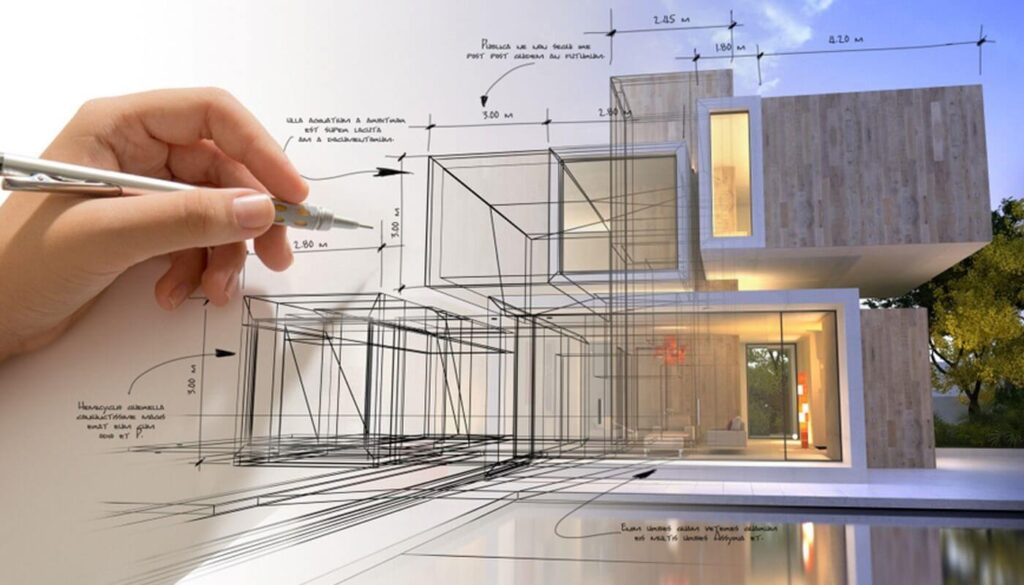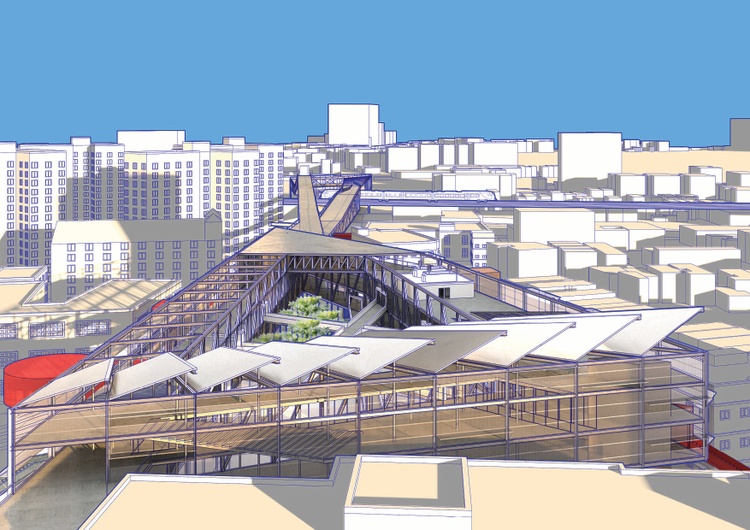The Creative Process Behind Successful Projects from CDA Architects
The Creative Process Behind Successful Projects from CDA Architects
Blog Article
The Vital Role of a Designer in Forming Lasting Urban Atmospheres for Future Generations
The function of a designer in crafting lasting urban environments is increasingly critical in reacting to the challenges of environment change and urbanization. By seamlessly incorporating eco-friendly concepts into their styles, designers not only enhance the visual and useful high quality of city areas however also address pushing concerns such as energy efficiency and social equity. Their knowledge in innovative products and neighborhood interaction shapes developments that reverberate with regional values and desires. Nonetheless, as we check out the complexities of this area better, it ends up being apparent that the future of urban living might pivot on the very practices engineers utilize today.
Understanding Lasting Urban Design
Lasting urban style incorporates ecological principles with city planning to develop environments that are not only habitable yet likewise resistant. This method highlights the relevance of incorporating natural systems right into the urban material, making certain that development meets the requirements of the present without compromising the capacity of future generations to meet their own requirements. Crucial element of sustainable metropolitan layout include reliable land use, the promotion of biodiversity, and the integration of eco-friendly rooms, every one of which add to boosted quality of life for locals.
Furthermore, sustainable metropolitan style focuses on the decrease of the urban heat island effect, improved air quality, and efficient stormwater administration. It urges making use of eco-friendly sources and energy-efficient structure techniques, which considerably lower carbon footprints. Additionally, sustainable urban design fosters social equity by creating accessible public spaces and advertising mixed-use growths that satisfy varied populaces.
Via thoughtful planning and innovative layout techniques, sustainable urban environments can boost neighborhood durability versus environment adjustment while promoting economic growth. This alternative approach not just addresses prompt metropolitan challenges yet likewise prepares for much healthier, a lot more sustainable cities for generations ahead.
Secret Responsibilities of Engineers
Designers play a pivotal duty in shaping lasting metropolitan atmospheres by equating design principles into tangible structures and spaces. Their responsibilities incorporate a variety of tasks that add to the general success of urban layout jobs.
First and foremost, designers carry out thorough site analyses to understand the environmental, social, and social context of their jobs. This fundamental understanding educates their design choices, guaranteeing that structures harmonize with their environments. They additionally take part in joint processes with stakeholders, consisting of city organizers, engineers, and the neighborhood, cultivating a comprehensive technique to urban advancement.
In addition, architects are charged with developing styles that maximize power efficiency, resource preservation, and capability. They should stick to regional zoning regulations, constructing codes, and sustainability certifications, making certain compliance while pressing the boundaries of technology.

Innovative Materials and Techniques
In the search of ecologically accountable design, innovative products and methods have become vital aspects in the development of sustainable city atmospheres. Architects are significantly using materials that decrease ecological impact while boosting energy efficiency. Recycled products, such as reclaimed timber and repurposed metals, not just decrease waste yet likewise include distinct visual high qualities to frameworks.
In addition, developments in innovation have actually resulted in the advancement of high-performance products, such as shielded concrete forms (ICFs) and solar glass, which add to power preservation and harness renewable energy. Methods such as easy solar layout and environment-friendly roofs even more exemplify exactly how design can integrate with all-natural systems, reducing reliance on synthetic cooling and heating.
Additionally, the combination of clever products, which adjust to ecological adjustments, supplies encouraging methods for boosting structure efficiency - cda architects. These products can reply to temperature level changes or wetness degrees, enhancing comfort and sustainability
Eventually, the tactical selection and application of ingenious products and methods equip architects to create urban rooms that are not just useful and cosmetically pleasing yet additionally durable and ecologically responsible, guaranteeing a sustainable future for generations ahead.
Area Interaction and Partnership
The success visit the website of innovative products and strategies in sustainable urban architecture is dramatically improved by active area involvement and partnership. Architects have to identify that the developed setting greatly impacts the lives of local homeowners, making it necessary to include them in the design procedure. Engaging the area fosters a feeling of ownership and accountability, ensuring that growths not only meet visual and functional requirements yet additionally mirror the worths and desires of those that populate them.

Successful neighborhood interaction likewise assists in focusing on social equity within urban growth. By considering the voices of marginalized populations, architects can develop rooms that are inclusive and equitable. By doing this, community engagement and collaboration become integral to achieving really sustainable urban environments that offer the demands of present and future generations.
Future Patterns in Lasting Design

Furthermore, developments in technology are forming future fads in sustainable architecture. The integration of wise materials and structure systems permits real-time power administration, enhancing performance and decreasing carbon impacts. Advancements such as green roofings, living wall surfaces, and energy-generating facades are coming to be standard methods, further promoting eco-friendly balance within metropolitan settings.
Moreover, a shift in more helpful hints the direction of biophilic layout is getting grip, emphasizing the connection between nature and human health. By including natural aspects, engineers create spaces that promote mental health and wellness while promoting biodiversity.
Verdict
In conclusion, designers are essential in progressing lasting city settings through their competence in layout, cutting-edge products, and area involvement. By focusing on power efficiency and resource conservation, these professionals contribute to the creation of resilient urban spaces that meet the needs of present and future generations - cda architects. The integration of eco-friendly concepts not just improves livability however likewise promotes social equity, guaranteeing advancements resonate with the values and aspirations of the communities they offer
Report this page